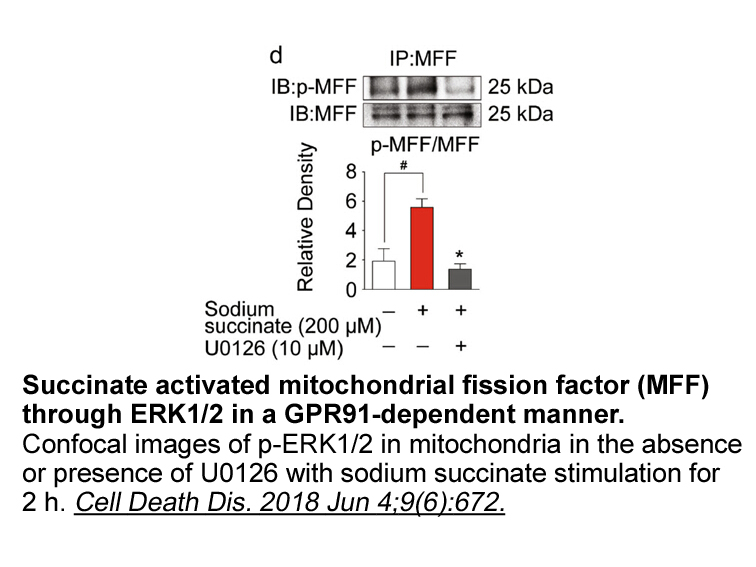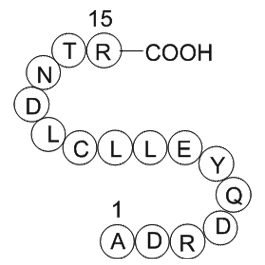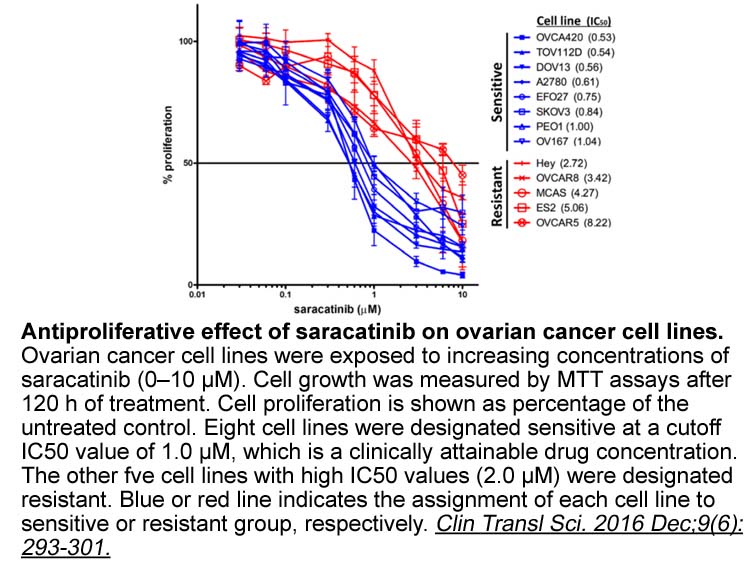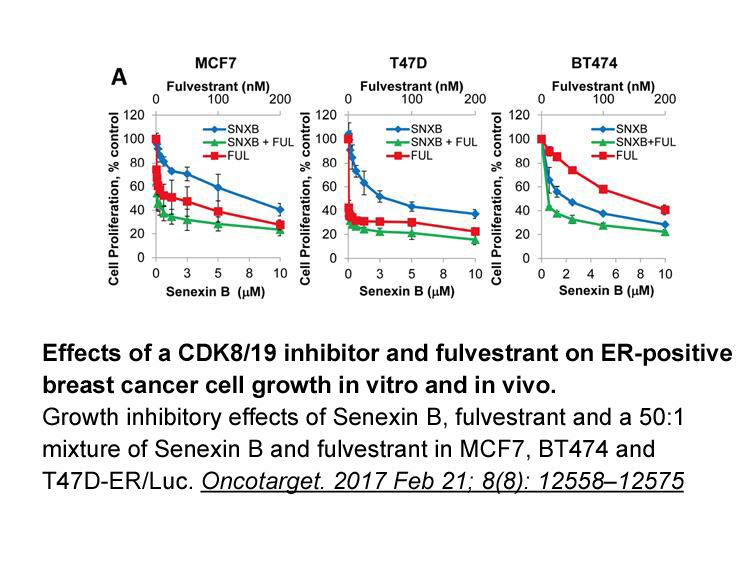Archives
- 2025-11
- 2025-10
- 2023-07
- 2023-06
- 2023-05
- 2023-04
- 2023-03
- 2023-02
- 2023-01
- 2022-12
- 2022-11
- 2022-10
- 2022-09
- 2022-08
- 2022-07
- 2022-06
- 2022-05
- 2022-04
- 2022-03
- 2022-02
- 2022-01
- 2021-12
- 2021-11
- 2021-10
- 2021-09
- 2021-08
- 2021-07
- 2021-06
- 2021-05
- 2021-04
- 2021-03
- 2021-02
- 2021-01
- 2020-12
- 2020-11
- 2020-10
- 2020-09
- 2020-08
- 2020-07
- 2020-06
- 2020-05
- 2020-04
- 2020-03
- 2020-02
- 2020-01
- 2019-12
- 2019-11
- 2019-10
- 2019-09
- 2019-08
- 2019-07
- 2019-06
- 2019-05
- 2019-04
- 2018-11
- 2018-10
- 2018-07
-
Given that inactivation of GLO by BAB is an
2022-05-13

Given that inactivation of GLO1 by 4BAB is an active site directed mechanism, as the transition state analogue CHG protects GLO1 against inactivation by 4BAB (Figs. 2D and S6b), we next set out to determine the amino kinesin inhibitor that is covalently modified by 4BAB. From the X-ray crystallogra
-
Post translational ubiquitination has been shown to regulate
2022-05-13

Post-translational ubiquitination has been shown to regulate a wide range of cellular responses, such as the synaptic trafficking and turnover of neurotransmitter receptors (Rape, 2018). Ubiquitination is also engaged in the modification of protein-protein interaction and intracellular signaling tra
-
br Results and discussion br Conclusions
2022-05-13

Results and discussion Conclusions TZDs represent a well-studied group of antidiabetic agents. Based on previous observations of the ability of some TZDs to activate FFAR1, we designed five scaffolds consisting of the TZD head, a linker, and a carefully selected privileged structure. For the p
-
To assess whether this coupling
2022-05-13

To assess whether this coupling mechanisms might operate also in a native system of untransfected cells, we select a cell line SH-SY5Y neuroblastoma that is known to express both the dopamine transporter and the M-currents (Jiang et al., 2004; Wickenden et al., 2008). These experiments were performe
-
br Acknowledgements The authors are grateful for funding
2022-05-13

Acknowledgements The authors are grateful for funding provided by the Health Research Council of New Zealand. Introduction Glucose is the most important energy carrier of the brain. Glucose transporter type 1 (Glut1) is located at the blood–brain barrier and assures the energy-independent, fa
-
Ghsr may have therapeutic value in disorders associated with
2022-05-13

Ghsr may have therapeutic value in disorders associated with impairments in AHN. As anxiety disorders and enhanced fear responses observed in PTSD are linked with overgeneralization of similar but distinct memories (i.e poor discrimination), we suggest that acyl-ghrelin’s anti-anxiety effect (Lutter
-
br Experimental br Results and discussions br Conclusion
2022-05-12

Experimental Results and discussions Conclusion Notes Introduction The noncanonical DNA structures that is, i-motif [[1], [2], [3], [4], [5], [6], [7], [8], [9]] and G-quadruplex [[10], [11], [12], [13], [14]] have recently been carefully studied using either experimental or computati
-
Akt mTOR signaling pathway is a major negative
2022-05-12

Akt/mTOR signaling pathway is a major negative regulator of autophagy, via modulating ULK1 complex. It is well established that Inhibition of mTOR by deprivation of nutrients or growth factors, led to dephosphorylation of ULK1, ULK2, and Atg13 in human cells, which is a key step for ULK1 complex ass
-
br Nanoscale Cortical Actin Remodeling in Regulated Exocytos
2022-05-12

Nanoscale Cortical Actin Remodeling in Regulated Exocytosis The network of cortical AZD7687 sale is formed by numerous fine actin filaments, which are only about 10nm in diameter [52]. Although the microscale role of the cortical actin network in vesicle exocytosis is well established, the funct
-
YAP TAZ nuclear function is also influenced by interaction
2022-05-12

YAP/TAZ nuclear function is also influenced by interaction with the TEAD family of transcription factors [96, 97, 98, 99, 100, 101]. The RAC1 LB42708 exchange factor protein TIAM1 has recently been linked to YAP/TAZ regulation in the nucleus and cytoplasm. Nuclear TIAM1 inhibits YAP/TAZ binding to
-
Mitochondrial binding by HK prevents mortality by inhibiting
2022-05-12

Mitochondrial binding by HK prevents mortality by inhibiting pro-apoptotic factor (Bcl-2 family)-mediated opening of the mitochondrial permeability transition pore (mPTP) (Arora and Pedersen, 1988, Calmettes et al., 2016, Kodde et al., 2007, Pedersen et al., 2002, Rosano, 2011, Schindler and Foley,
-
Prochlorperazine br Financial support This study was
2022-05-12

Financial support This study was supported by Grant PH-102-PP-11, PH-103-PP-11 from the National Health Research Institutes, Taiwan. Conflict of interest Please refer to the accompanying ICMJE disclosure forms for further details. Authors’ contributions Acknowledgements Introduction
-
Thus our data demonstrate that polymorphisms
2022-05-12

Thus, our data demonstrate that polymorphisms of GSTP1-1 differentially mediate activation of Prdx6 peroxidase activity, providing a platform to imply that contingent upon their GSTP genotype, individuals will have significant differences in mounting an antioxidant response, particularly affecting p
-
Elimination of the Q R bridge
2022-05-11

Elimination of the Q234–R244 bridge significantly affected the protein annexin v mg but had little effect on its activity at a permissive temperature, which may seem contrary to the known functional importance of this motif in Fpg. However, since the mutants fully or partially retained the bound zi
-
The aims of the present study were to further investigate
2022-05-11

The aims of the present study were to further investigate the localisation of glycine and GABAA receptors on individual neurons and how closely these two receptor types were associated with each other by carrying out double immunofluorescent labelling and imaged using confocal laser scanning microsc
11496 records 138/767 page Previous Next First page 上5页 136137138139140 下5页 Last page